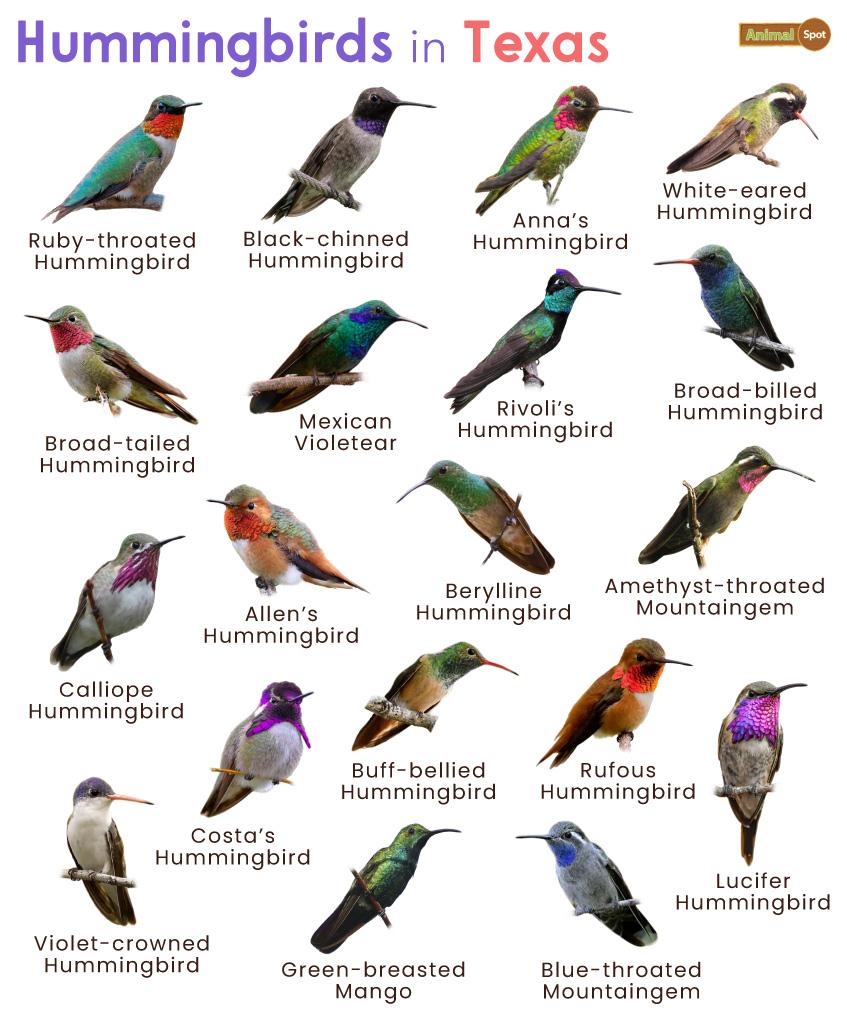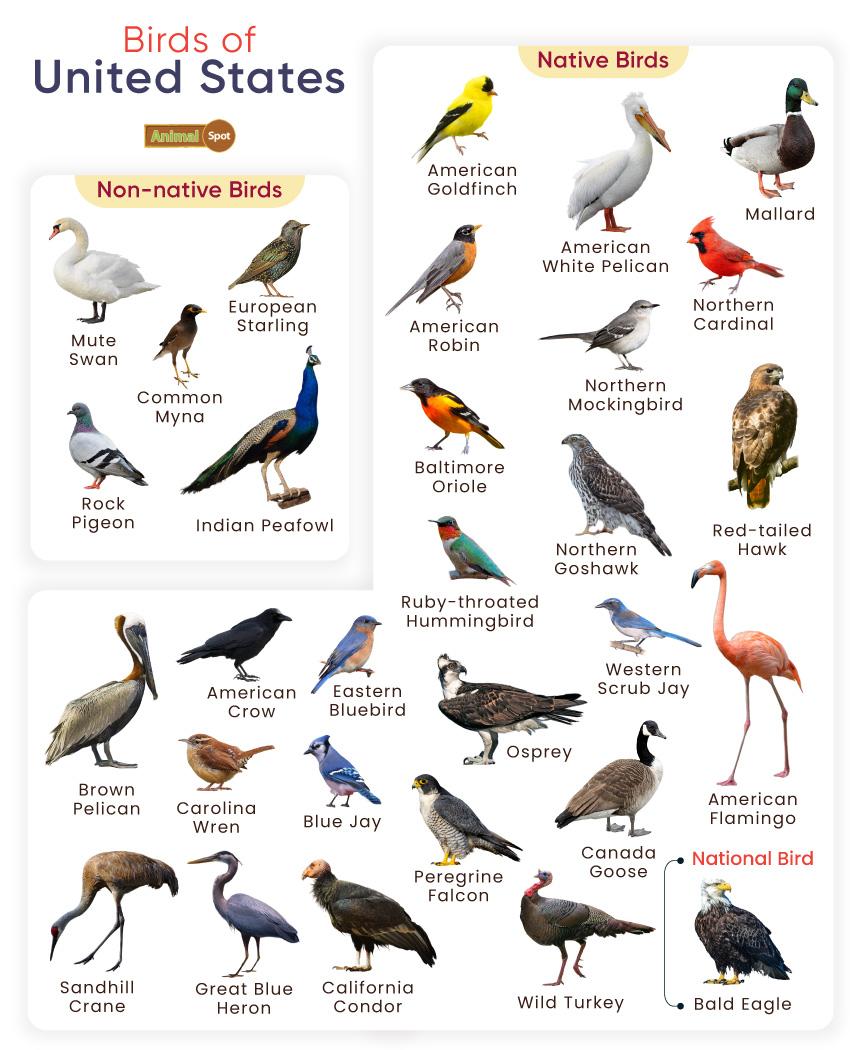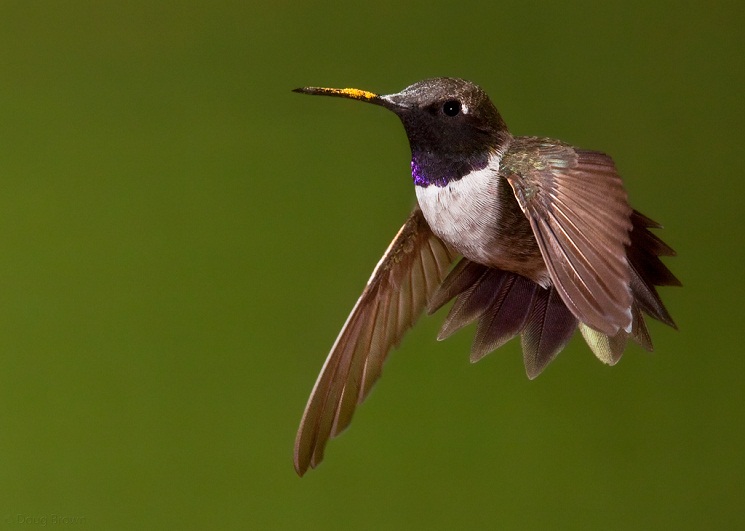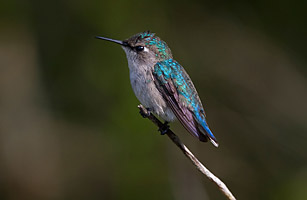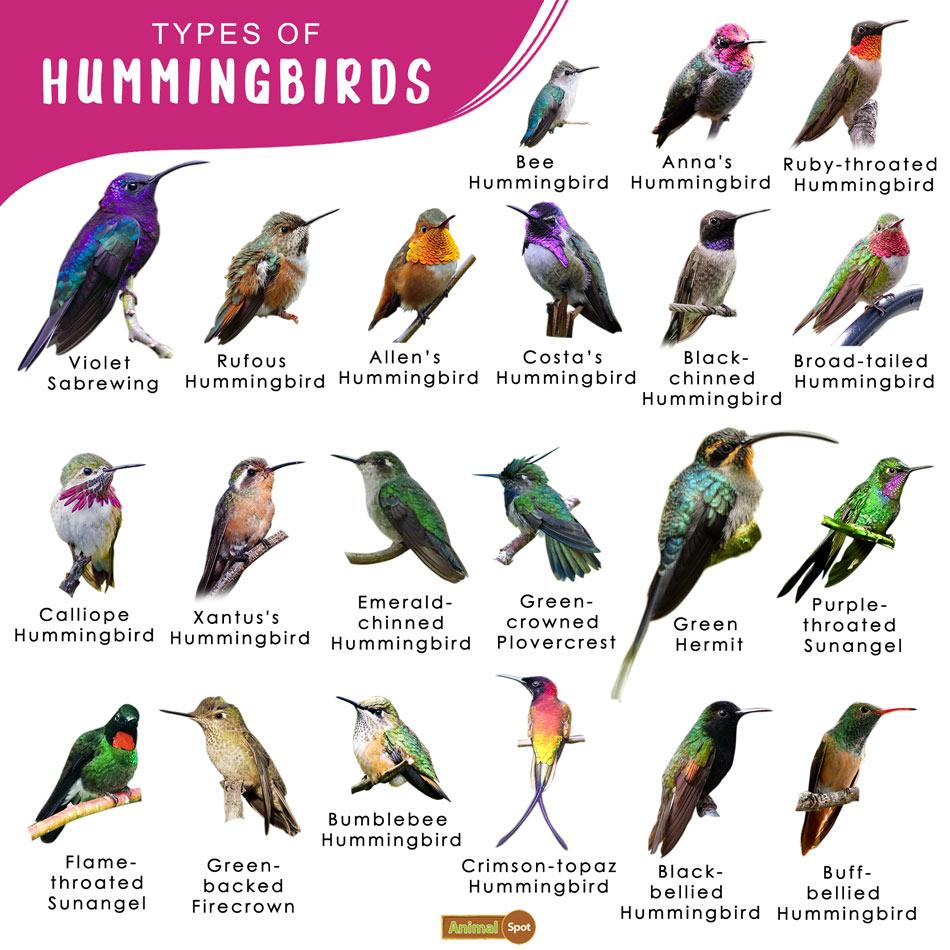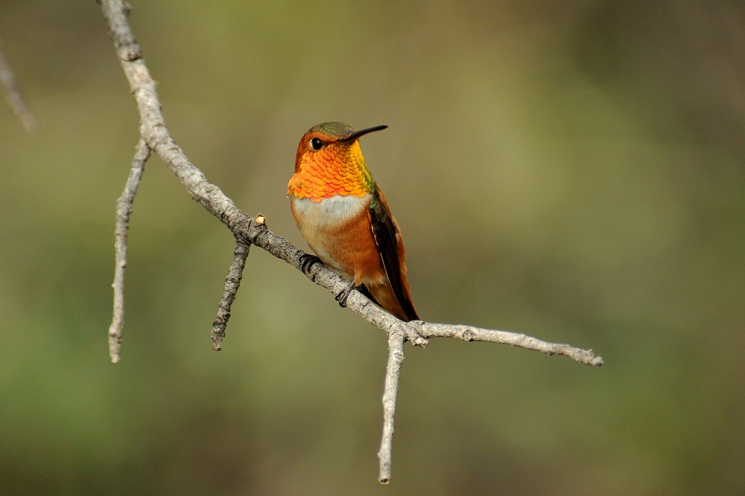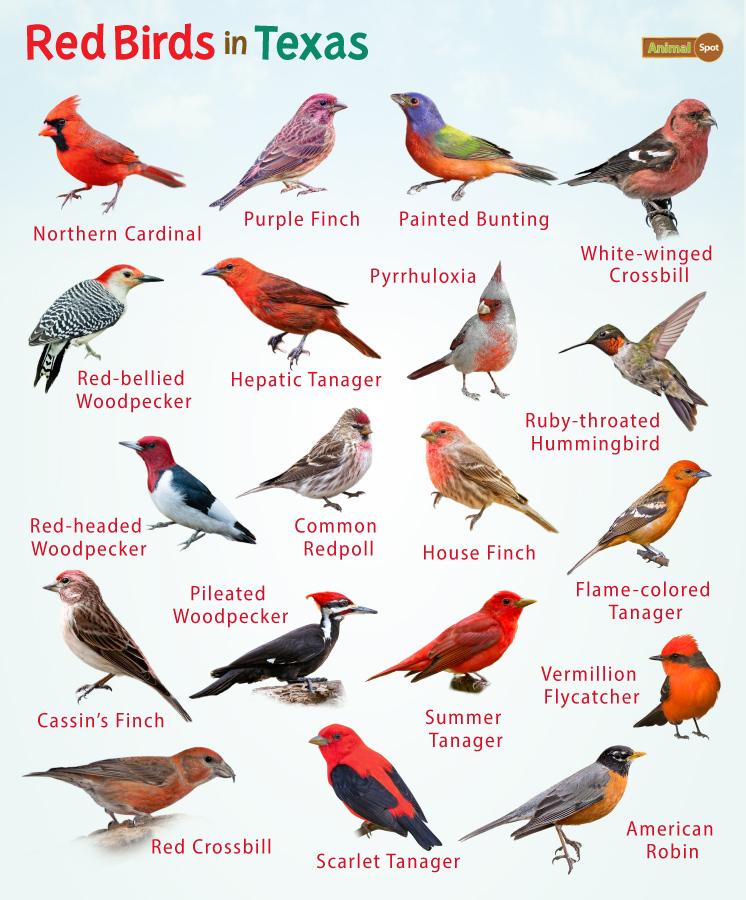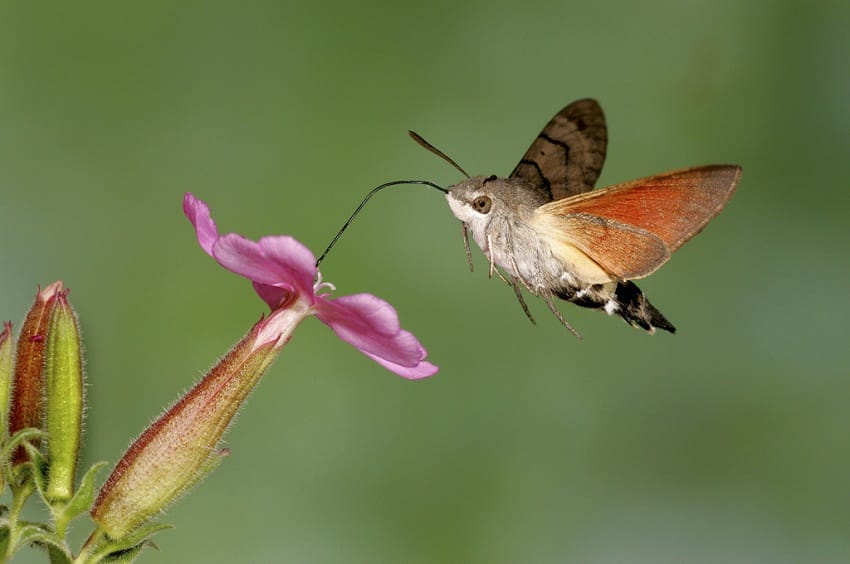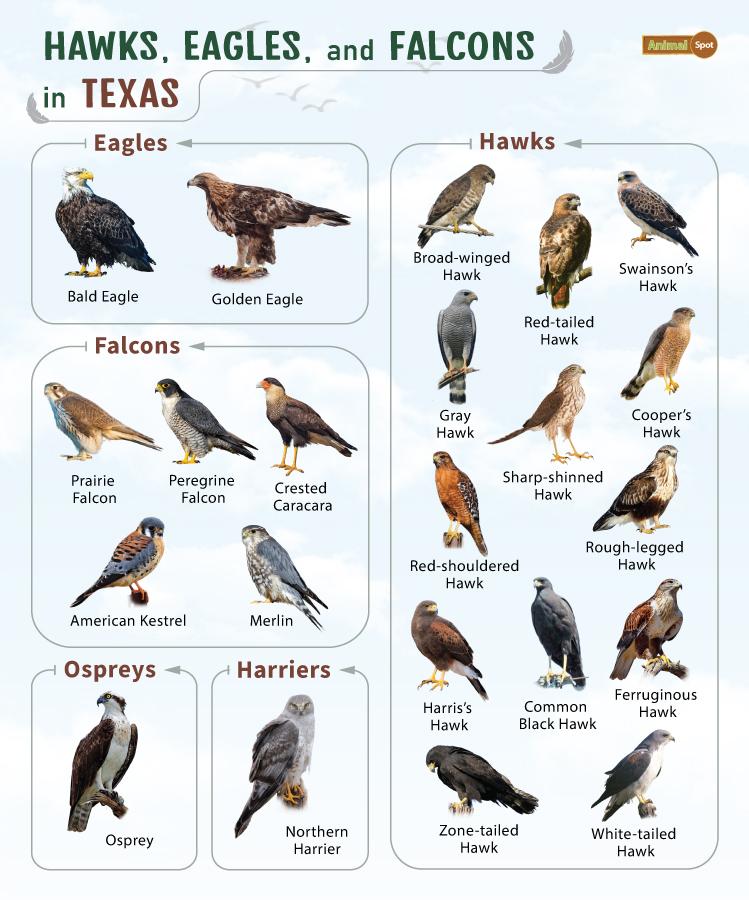| Name of the Species | Identifying Features (Males) | Where They Can be Seen |
| Ruby-throated Hummingbird | Bright red throat with a distinct white collar, and white underparts | East Texas, primarily in woodland and gardens |
| Black-chinned Hummingbird | Glossy purple-black throat, shimmering greenish back, and white underparts | Throughout Texas, in urban and suburban areas with flowering plants and feeders |
| Anna’s Hummingbird | Distinctive pinkish-red crown and throat | Rarely in far west Texas near the border with Mexico |
| Rufous Hummingbird | Bright red throat with a distinct white collar and white underparts | Common in the Panhandle and West Texas |
| Broad-tailed Hummingbird | Iridescent rose throat with white underparts | The western part of the state, near Mexico, particularly in montane habitats, pine-oak forests, and near streams |
| Blue-throated Mountaingem | Brilliant blue throat, deep green body, and a white line behind the eye | South and West Texas, especially in oak-pine woodlands, canyons, and desert scrub |
| Lucifer Hummingbird | Glossy red throat and slightly forked tail | The lower Rio Grande Valley in South Texas |
| Mexican Violetear (Green Violetear) | Bright green plumage with a vibrant violet-blue crown | Rarely in far south Texas, near the Mexican border |
| Green-breasted Mango | Vibrant plumage with a green throat | The lower Rio Grande Valley in South Texas |
| Amethyst-throated Mountaingem | Amethyst throat, white underparts, and a long tail | Extremely rare, western Texas, mountainous regions |
| Costa’s Hummingbird | Glossy purple crown and white underparts | Primarily found in the Big Bend region of West Texas |
| White-eared Hummingbird | A distinctive white ear patch, and a dark mask | The Big Bend region of West Texas, particularly in desert scrub, and arid canyons |
| Violet-crowned Hummingbird | A distinctive white ear patch and a dark mask | West Texas, especially in high-elevation canyons and desert areas with agave and yucca plants |
| Berylline Hummingbird | Iridescent throat and crown, and a deep pinkish-red bill | Rarely seen in the Davis Mountains of West Texas |
| Calliope Hummingbird | A rosy throat patch, iridescent gorget, and white underparts | Rarely in the Trans-Pecos region of West Texas, particularly in higher-elevation woodlands and meadows |
| Buff-bellied Hummingbird | Green throat, cinnamon sides, and a dark mask | Primarily found in the lower Rio Grande Valley, especially in subtropical forests, gardens, and near coastal habitats |
| Rivoli’s Hummingbird | Green throat and crown, with a deep blue patch on the chest | West Texas, often in montane pine-oak forests and canyons |
| Broad-billed Hummingbird | Bright green back, iridescent throat, and a purple-blue bill | The southern and western parts of Texas, in desert scrub and canyons |
| Allen’s Hummingbird | Shiny reddish throat, and a distinct white eye patch | The Big Bend region and Trans-Pecos area |

